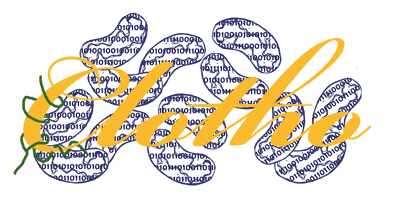Team:UC Berkeley Tools/Project/Tutorial/PoBoL
From 2008.igem.org
| (One intermediate revision not shown) | |||
| Line 7: | Line 7: | ||
| + | <p><br><br>[[Team:UC_Berkeley_Tools/Project/Tutorial/Database|'''<<< Previous''']] | [[Team:UC_Berkeley_Tools/Project/Tutorial/PartsAndPlatesManager|'''Next >>>''']]</p> | ||
<p><strong>8) PoBoL</strong></p> | <p><strong>8) PoBoL</strong></p> | ||
<p>PoBoL stands for "Provisional Biobrick Language", and represents a way to translate different databases into one common language. The binding file is a way of specifying which tables and entries from the database correspond to which PoBoL data types. Ideally, you would be able to download a binding file for any given database, saving you the trouble - for our tutorial database, such a file can be found **HERE** - just copy and paste the contents of the text file into the 'Binding Configuration' window. If no such file existed though, you would have to create it manually: first you would select a Table and then a Field from the 'Database Information' box, and then a corresponding Object and Field from the 'PoBoL fields' box, and click "Bind". This would have to be done for all the tables and fields you wish to use from the database. Fortunately, you only have to create the mySQL connection and its corresponding PoBoL binding file once. Now click "Save/Connect", and select 'Yes' when the message box appears. Now Clotho is connected! (Note: In future uses, you will only have to enter the user name and password and click "Connect".)</p> | <p>PoBoL stands for "Provisional Biobrick Language", and represents a way to translate different databases into one common language. The binding file is a way of specifying which tables and entries from the database correspond to which PoBoL data types. Ideally, you would be able to download a binding file for any given database, saving you the trouble - for our tutorial database, such a file can be found **HERE** - just copy and paste the contents of the text file into the 'Binding Configuration' window. If no such file existed though, you would have to create it manually: first you would select a Table and then a Field from the 'Database Information' box, and then a corresponding Object and Field from the 'PoBoL fields' box, and click "Bind". This would have to be done for all the tables and fields you wish to use from the database. Fortunately, you only have to create the mySQL connection and its corresponding PoBoL binding file once. Now click "Save/Connect", and select 'Yes' when the message box appears. Now Clotho is connected! (Note: In future uses, you will only have to enter the user name and password and click "Connect".)</p> | ||
<p>More information on PoBoL can be found **HERE**.</p> | <p>More information on PoBoL can be found **HERE**.</p> | ||
[[Image:Tut8.PNG|center]] <p> </p> | [[Image:Tut8.PNG|center]] <p> </p> | ||
| + | |||
| + | <p>[[Team:UC_Berkeley_Tools/Project/Tutorial/Database|'''<<< Previous''']] | [[Team:UC_Berkeley_Tools/Project/Tutorial/PartsAndPlatesManager|'''Next >>>''']]</p> | ||
Latest revision as of 01:46, 24 October 2008
8) PoBoL
PoBoL stands for "Provisional Biobrick Language", and represents a way to translate different databases into one common language. The binding file is a way of specifying which tables and entries from the database correspond to which PoBoL data types. Ideally, you would be able to download a binding file for any given database, saving you the trouble - for our tutorial database, such a file can be found **HERE** - just copy and paste the contents of the text file into the 'Binding Configuration' window. If no such file existed though, you would have to create it manually: first you would select a Table and then a Field from the 'Database Information' box, and then a corresponding Object and Field from the 'PoBoL fields' box, and click "Bind". This would have to be done for all the tables and fields you wish to use from the database. Fortunately, you only have to create the mySQL connection and its corresponding PoBoL binding file once. Now click "Save/Connect", and select 'Yes' when the message box appears. Now Clotho is connected! (Note: In future uses, you will only have to enter the user name and password and click "Connect".)
More information on PoBoL can be found **HERE**.
 "
"

